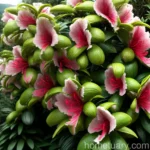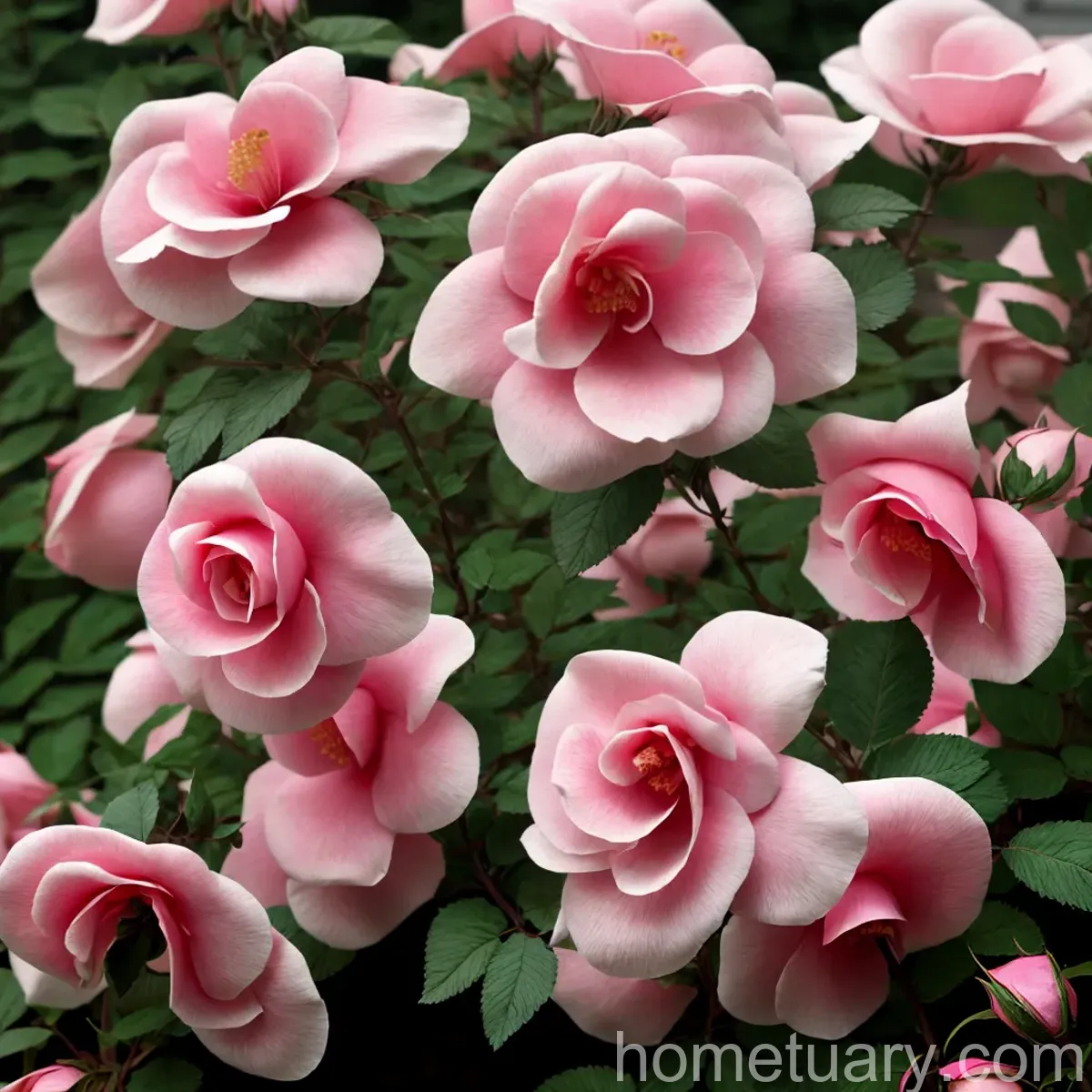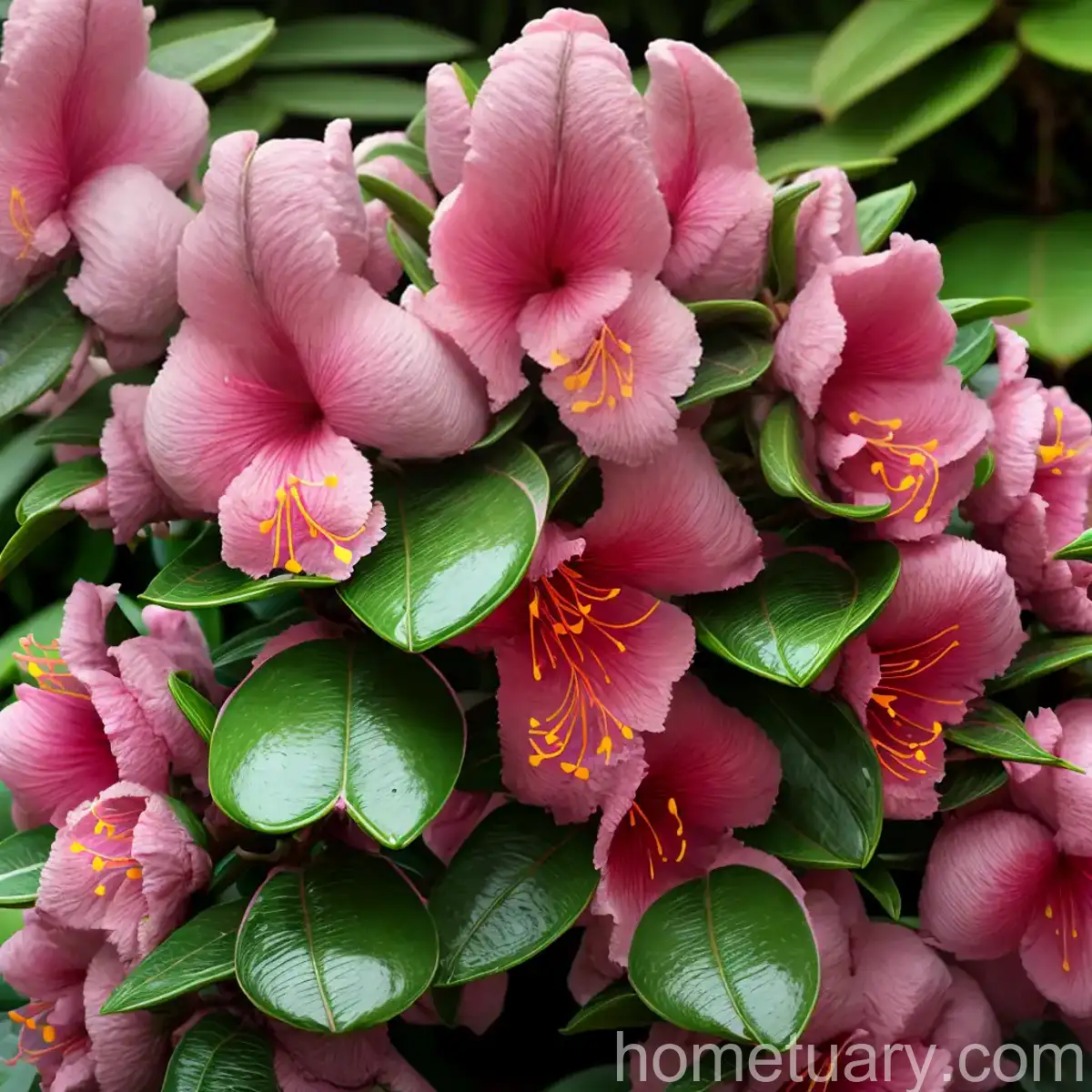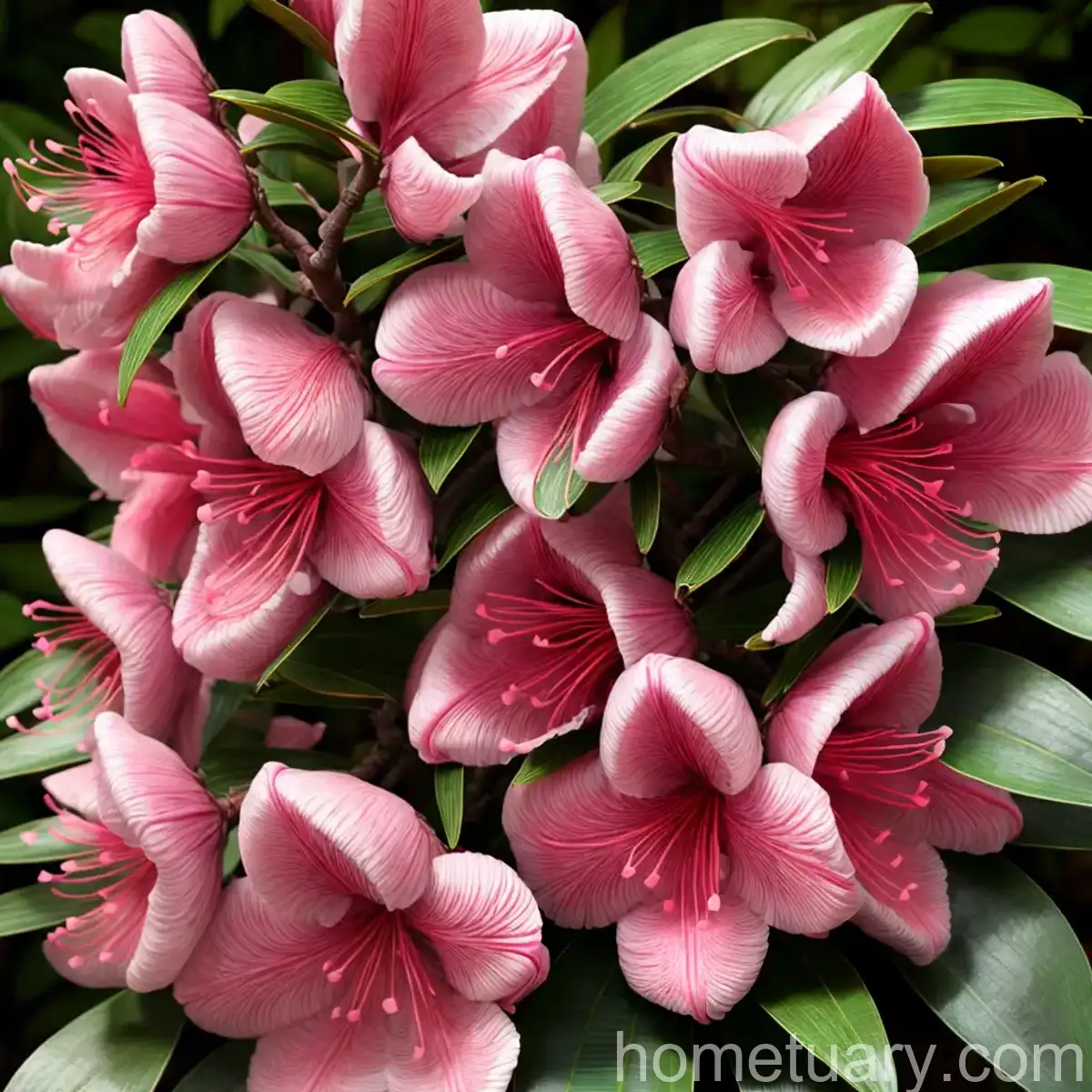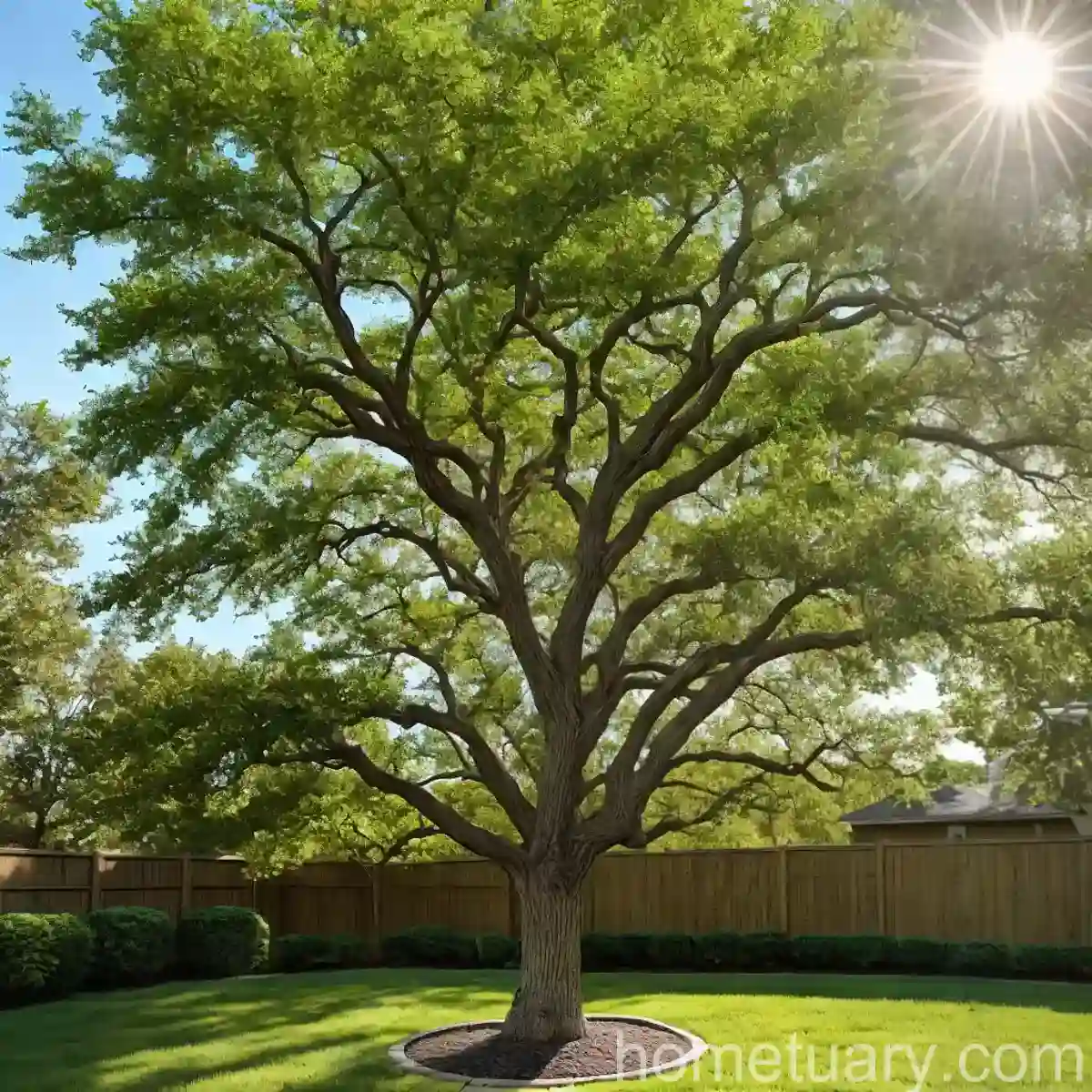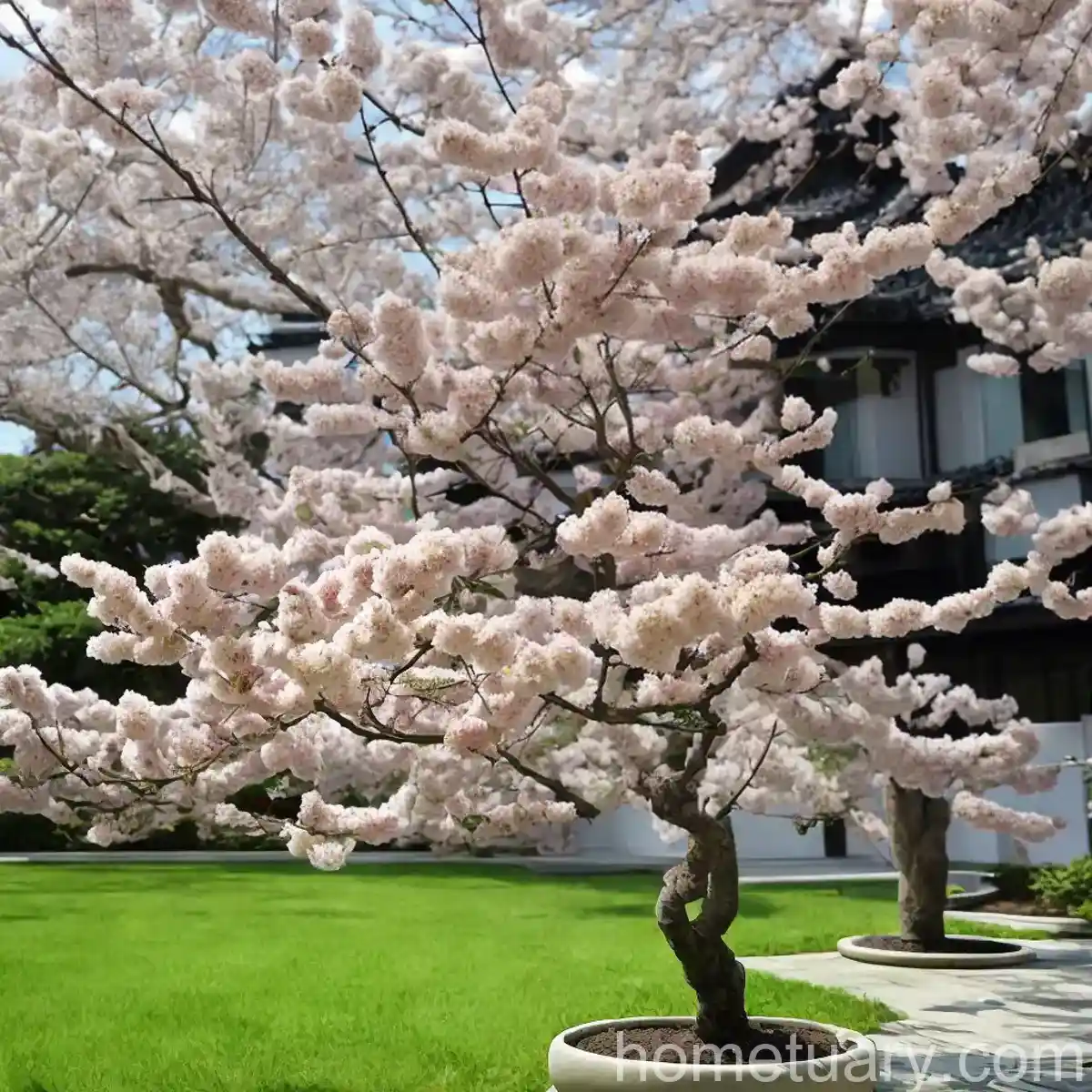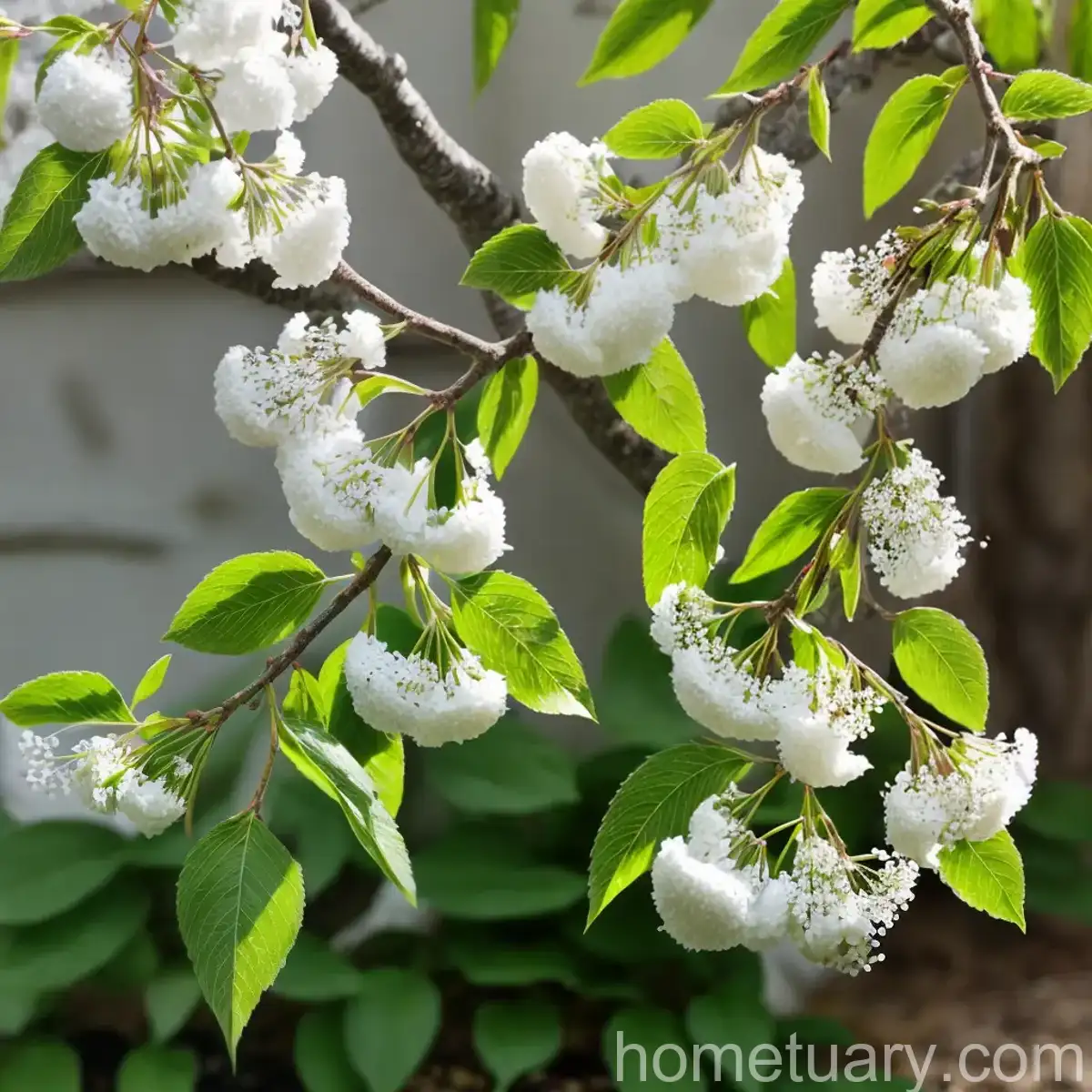Everything You Need to Know about Azalea (Rhododendron ‘White Lights’)
Azaleas are one of the most beloved plants in gardens around the world due to their stunning blooms and relative ease of care. Among the many varieties of azaleas, the ‘White Lights’ (Rhododendron ‘White Lights’) stands out for its beautiful white flowers and unique characteristics. In this comprehensive guide, we will explore everything you need to know about the azalea ‘White Lights’, from its culture and uses to its care requirements, common diseases, and fun facts. Whether you’re a seasoned gardener or a novice plant enthusiast, this article will provide you with valuable insights into cultivating and caring for this beautiful plant.
What is Azalea (Rhododendron ‘White Lights’)?
The ‘White Lights’ is a variety of azalea that belongs to the Rhododendron genus. It is known for its stunning white flowers that bloom in the spring, adding a touch of elegance and brightness to any garden or landscape. This compact shrub exhibits a dense, mounding growth habit, making it an ideal choice for borders, hedges, or container plantings.
Key Takeaways – Azalea (Rhododendron ‘White Lights’)
Before delving into the details of caring for the ‘White Lights’ azalea, let’s summarize the key takeaways for easy reference:
- Plant Name: Azalea (Rhododendron ‘White Lights’)
- Family: Ericaceae
- Genus: Rhododendron
- Type: Evergreen shrub
- Bloom Time: Spring
- Flower Color: White
- Growth Habit: Compact, mounding
- Uses: Borders, hedges, containers
- Hardiness Zone: 4-7
- Sunlight: Partial shade to full sun
- Soil: Well-drained, acidic
- Water: Regular watering, consistent moisture
- Fertilizer: Acidic plant fertilizer
- Pruning: After flowering to shape and promote new growth
- Propagation: Cuttings, layering, seeds
Now, let’s dive deeper into each aspect of caring for the ‘White Lights’ azalea.
Culture
The culture of the azalea ‘White Lights’ encompasses its preferred growing conditions, landscape uses, and overall characteristics. Understanding the cultural requirements of this plant is essential for ensuring its successful growth and development.
Uses
The ‘White Lights’ azalea offers a range of landscape uses, thanks to its attractive features and versatile characteristics:
-
Borders: The compact and mounding growth habit of the ‘White Lights’ makes it an excellent choice for border plantings. Whether used as a single specimen or planted in groups, its white blooms create a stunning visual impact.
-
Hedges: When planted in a row, the ‘White Lights’ azalea can be shaped into a low hedge, providing both beauty and privacy in the garden. Its evergreen foliage and spring blooms make it an appealing choice for defining garden boundaries.
-
Containers: Due to its compact size and aesthetic appeal, the ‘White Lights’ azalea thrives in containers, making a charming addition to patios, decks, and outdoor seating areas. Its elegant white flowers bring a touch of elegance to any container garden.
Water
Proper watering is crucial for the health and vitality of the ‘White Lights’ azalea. While these plants appreciate consistent moisture, they are susceptible to root rot if the soil becomes waterlogged. Here are some essential tips for watering the ‘White Lights’ azalea:
-
Consistent Moisture: Azaleas prefer soil that is consistently moist but not waterlogged. During periods of dry weather, ensure that the plants receive sufficient water to maintain soil moisture.
-
Mulching: Applying a layer of organic mulch around the base of the plant helps to retain soil moisture and regulate temperature. Mulch also aids in preventing weed growth and protecting the roots from fluctuating temperatures.
-
Avoid Overhead Watering: When watering azaleas, it is best to avoid overhead irrigation, as wet foliage can lead to disease issues. Instead, use a soaker hose or water directly at the base of the plant to minimize moisture on the leaves.
Sunlight
The ‘White Lights’ azalea thrives in partial shade to full sun, although its ideal sunlight requirements may vary depending on local climate conditions. Understanding the sunlight needs of this plant is essential for establishing an optimal growing environment.
-
Partial Shade: In areas with hot summers, providing the ‘White Lights’ azalea with partial shade during the hottest part of the day can help protect it from sunburn and heat stress. Morning sun and afternoon shade are often preferred.
-
Full Sun: In cooler regions, the ‘White Lights’ azalea can tolerate full sun, especially if provided with adequate moisture and protection from harsh afternoon sun. Full sun exposure can promote lush foliage and abundant blooms.
-
Site Selection: When choosing a planting location for the ‘White Lights’ azalea, consider the amount of sunlight the area receives throughout the day and select a spot that best suits the plant’s sunlight requirements.
Fertilizer
Fertilizing azaleas is essential for promoting healthy growth and vibrant blooms. The ‘White Lights’ variety benefits from regular applications of acidic plant fertilizer, tailored to its specific nutritional needs. Here’s what you need to know about fertilizing this beautiful azalea:
-
Acidic Fertilizer: Azaleas, including the ‘White Lights’ variety, thrive in acidic soil conditions. Using a fertilizer formulated for acid-loving plants provides the necessary nutrients while maintaining the soil pH at an optimal level.
-
Timing and Frequency: Apply fertilizer to the ‘White Lights’ azalea in early spring before new growth emerges. A second application can be made after the plant finishes blooming to support overall health and encourage next year’s flowers.
-
Avoid Overfertilization: While azaleas benefit from regular feeding, it is crucial to avoid overfertilization, which can lead to excessive foliage growth at the expense of flower production. Follow the recommended dosage and application instructions provided by the fertilizer manufacturer.
Soil
The soil conditions play a critical role in the health and performance of the ‘White Lights’ azalea. As acid-loving plants, azaleas require well-drained, acidic soil to thrive. Understanding the soil requirements for this variety is essential for creating an optimal growing environment.
-
Well-Drained Soil: Azaleas are sensitive to waterlogged conditions, which can lead to root rot and other moisture-related issues. Plant the ‘White Lights’ azalea in well-drained soil to ensure proper aeration and avoid water saturation.
-
Acidic pH: The ideal soil pH for azaleas, including the ‘White Lights’ variety, ranges from 5.0 to 6.0. Conduct a soil test to determine the pH of the planting area, and amend the soil as needed to achieve the desired acidity level.
-
Organic Matter: Incorporating organic matter, such as peat moss or compost, into the soil during planting helps improve its structure, moisture retention, and nutrient content. Organic amendments also contribute to maintaining acidic conditions within the root zone.
Pruning
Pruning is an essential aspect of azalea care, contributing to the plant’s overall shape, vigor, and flower production. The ‘White Lights’ azalea benefits from regular pruning to maintain its compact form and encourage new growth and abundant blooms. Here are some pruning tips specific to this variety:
-
Timing: Prune the ‘White Lights’ azalea immediately after flowering, typically in late spring or early summer. This timing allows the plant to recover and produce new growth before the onset of winter.
-
Deadheading: Removing spent flowers, or deadheading, not only improves the plant’s appearance but also redirects its energy into developing new buds and foliage. Use sterile pruners to deadhead the ‘White Lights’ azalea, making clean cuts just above a healthy set of leaves or a dormant bud.
-
Thinning: To promote air circulation and light penetration within the canopy, selectively thin out crowded or crossing branches. Thinning also helps reduce disease pressure and encourages the development of new flowering wood.
-
Shaping: If necessary, shape the ‘White Lights’ azalea by selectively trimming back long or unruly branches. Maintain the plant’s natural form while removing any weak, damaged, or excessively tall growth.
Propagation
Understanding the propagation methods for the ‘White Lights’ azalea allows gardeners to expand their collection of these beautiful plants or share them with others. Propagation can be achieved through several techniques, including cuttings, layering, and seeds. Here’s an overview of the propagation methods suitable for this variety:
-
Cuttings: Stem cuttings are a popular and reliable method for propagating the ‘White Lights’ azalea. Select healthy, non-flowering shoots in late spring or early summer, and root them in a well-draining propagation medium to produce new plants.
-
Layering: Air layering or ground layering can be used to propagate the ‘White Lights’ azalea by encouraging the formation of roots on a portion of the parent plant. Layering is a suitable technique for woody plants and can result in established plants within a reasonable timeframe.
-
Seeds: While azaleas can be grown from seeds, this method is less commonly used due to the variability of seed-grown plants and the relatively slow growth rate compared to other propagation methods. However, collecting and sowing seeds can be an exciting way to explore the genetic diversity of the species.
Container Popularity
The ‘White Lights’ azalea’s compact size and attractive blooms make it a popular choice for container gardening. Growing this variety in containers offers several benefits, including the ability to control soil conditions, enhance mobility, and create stunning focal points. Consider the following factors when growing the ‘White Lights’ azalea in containers:
-
Container Selection: Choose a well-draining container that is slightly larger than the root ball of the plant. Select a container with adequate drainage holes to prevent waterlogged soil conditions.
-
Potting Mix: Use a high-quality, well-draining potting mix designed for acid-loving plants when planting the ‘White Lights’ azalea in containers. Avoid using standard garden soil, as it may lead to poor drainage and compaction.
-
Watering: Container-grown azaleas may require more frequent watering than those planted in the ground. Monitor the moisture level of the potting mix and water the plant when the top inch of the soil feels dry to the touch.
-
Overwintering: In regions with harsh winters, container-grown ‘White Lights’ azaleas may benefit from overwintering protection to shield the roots from freezing temperatures. Consider insulating the container or moving it to a sheltered location during the cold season.
Common Diseases
Azaleas, including the ‘White Lights’ variety, are susceptible to certain diseases that can affect their overall health and appearance. Being aware of common azalea diseases and their prevention measures is essential for maintaining the plant’s vitality. Here are some of the most prevalent diseases that may impact the ‘White Lights’ azalea:
-
Powdery Mildew: This fungal disease presents as a powdery white coating on the leaves and shoots of the azalea. Powdery mildew can lead to distorted growth and reduced plant vigor. To prevent powdery mildew, maintain good air circulation and avoid overhead watering.
-
Leaf Spot: Leaf spot diseases, caused by various fungi, result in the formation of dark spots on the foliage of azaleas. Severe infections can lead to premature leaf drop and defoliation. Apply fungicidal sprays as a preventive measure, especially during periods of high humidity.
-
Phytophthora Root Rot: Phytophthora is a soil-borne pathogen that causes root rot and decline in azaleas. Plants infected with Phytophthora may exhibit wilting, yellowing foliage, and dieback. Ensure proper soil drainage and avoid overwatering to minimize the risk of root rot.
-
Botryosphaeria Canker: This fungal disease can result in the formation of sunken cankers on the branches of azaleas, leading to dieback and decline. Prune out and dispose of infected branches to prevent the spread of Botryosphaeria canker within the plant.
Disease Diagnosis
Diagnosing diseases in the ‘White Lights’ azalea involves careful observation of the plant’s symptoms and understanding the causal agents of common diseases. When confronted with issues such as leaf discoloration, wilting, or abnormal growth, it is essential to accurately identify the underlying problem to implement effective treatment. Some diagnostic steps for azalea diseases include:
-
Symptom Recognition: Observe the specific symptoms exhibited by the ‘White Lights’ azalea, such as leaf spots, fungal growth, or wilting. Document the appearance and location of the symptoms to aid in diagnosis.
-
Pathogen Identification: Understand the typical pathogens associated with azalea diseases, including fungi, bacteria, and viruses. Consider the prevailing environmental conditions and plant stress factors that can contribute to disease development.
-
Laboratory Analysis: In cases where the disease is challenging to identify visually, submit samples of the affected plant parts, such as leaves or stems, to a diagnostic laboratory for analysis. Laboratory tests can confirm the presence of specific pathogens and guide appropriate management strategies.
-
Cultural and Environmental Factors: Assess the cultural and environmental conditions in which the ‘White Lights’ azalea is growing, as these factors can influence disease susceptibility. Address any underlying stressors to support the plant’s ability to resist diseases.
Through careful observation, analysis, and proactive management, gardeners can effectively diagnose and address diseases affecting the ‘White Lights’ azalea, promoting its long-term health and vitality.
Common Pests
Like many ornamental plants, azaleas are vulnerable to attack by various pests that can compromise their aesthetics and overall well-being. Being knowledgeable about common azalea pests and their management strategies is essential for protecting the ‘White Lights’ variety from pest-related issues. Some prevalent pests that may affect the ‘White Lights’ azalea include:
-
Azalea Lace Bug: These small insects feed on the underside of azalea leaves, causing stippling and discoloration. Regular inspection and timely treatment with insecticidal soaps or horticultural oils can help control lace bug infestations.
-
Spider Mites: Spider mites are minuscule arachnids that can infest azaleas and cause stippling, webbing, and leaf damage. Increasing humidity and applying insecticidal sprays can help mitigate spider mite populations.
-
Azalea Caterpillars: The larvae of certain moth species can feed on azalea foliage, leading to defoliation and aesthetic damage. Handpicking caterpillars or using biological insecticides can help manage caterpillar infestations while minimizing environmental impact.
-
Scale Insects: Scale insects can attach themselves to azalea stems and leaves, sucking plant juices and potentially weakening the plant. Targeted applications of horticultural oils or insecticidal sprays can effectively control scale populations.
By promptly identifying and addressing pest issues, gardeners can safeguard the ‘White Lights’ azalea from pest-related damage and ensure its continued beauty in the garden.
Botanist’s Tips
As a plant scientist with a keen interest in azaleas, I have compiled a set of valuable tips for cultivating and caring for the ‘White Lights’ azalea. These insights are aimed at promoting the plant’s health, enhancing its ornamental value, and supporting its long-term success in the garden. Here are some botanist’s tips for growing the ‘White Lights’ azalea:
-
Prune Wisely: When pruning the ‘White Lights’ azalea, focus on maintaining its natural shape while removing dead or damaged branches. Avoid excessive and unnecessary pruning, as it may reduce flower production and disrupt the plant’s growth pattern.
-
Monitor Soil Moisture: Regularly assess the moisture level of the soil around the ‘White Lights’ azalea, particularly during dry periods. Adjust the watering frequency based on the plant’s needs, aiming to provide consistent but not excessive moisture.
-
Mulch Moderately: Apply a moderate layer of organic mulch around the base of the ‘White Lights’ azalea, ensuring that the mulch does not come into direct contact with the plant’s stems. Excessive mulching can lead to moisture retention and potential fungal issues.
-
Promote Air Circulation: In regions with humid climates, optimize air circulation around the ‘White Lights’ azalea to reduce the risk of fungal diseases. Prune neighboring plants if necessary and avoid overcrowding to enhance airflow.
-
Support Winter Protection: In colder climates, provide appropriate winter protection for the ‘White Lights’ azalea by shielding it from harsh winds and insulating the root zone. Mulching and burlap wraps can help protect against winter desiccation.
These botanist’s tips aim to provide practical guidance for nurturing the ‘White Lights’ azalea, enabling gardeners to cultivate healthy, flourishing plants with abundant floral displays.
Fun Facts
To add a touch of fascination to your knowledge of azaleas, here are some fun and intriguing facts about these enchanting plants:
-
Symbolism: Azaleas are associated with various symbolic meanings, including passion, femininity, and fragility. In some cultures, azaleas represent temperance and moderation.
-
Cultural Significance: Azaleas are integral to the culture and traditions of several countries, such as Japan, where they are celebrated during the annual Tsutsuji Matsuri, or Azalea Festival.
-
Species Diversity: The Rhododendron genus, to which azaleas belong, comprises over 1,000 species, exhibiting an extensive range of flower colors, sizes, and growth habits.
-
Historical Connections: Azaleas have been cultivated for centuries, with records of their cultivation dating back to ancient China, where they were revered for their ornamental and medicinal properties.
-
Longevity: Given proper care and favorable growing conditions, azaleas can live for decades, bringing beauty and charm to gardens for generations.
Fun facts such as these add a touch of enchantment to the experience of growing and appreciating the ‘White Lights’ azalea, underscoring the rich cultural and botanical significance of these captivating plants.
Links to External Resources
For additional information, resources, and inspiration related to the care and cultivation of the ‘White Lights’ azalea, consider exploring the following external links:
-
American Azalea Society: The American Azalea Society offers a wealth of resources, articles, and expertise focused on the cultivation of azaleas and rhododendrons.
-
Azalea Society of America: The Azalea Society of America provides valuable insights and forums for azalea enthusiasts, with a focus on promoting the appreciation and understanding of azaleas.
-
Royal Horticultural Society – Azaleas and Rhododendrons: The Royal Horticultural Society offers comprehensive guidance on growing and caring for azaleas and rhododendrons, including specific varieties such as the ‘White Lights’ azalea.
-
[University Extension







